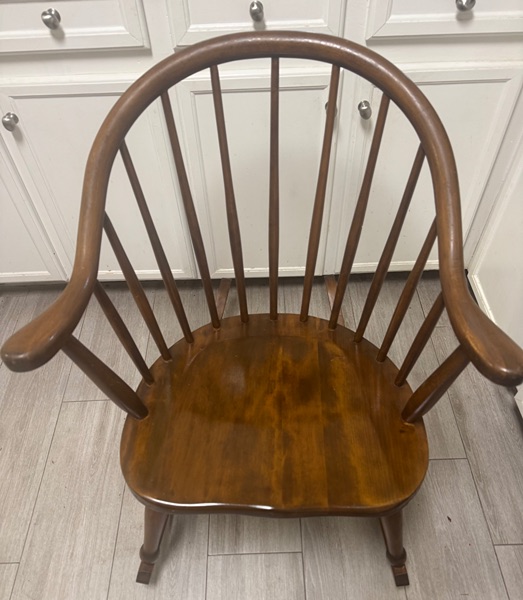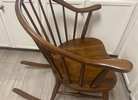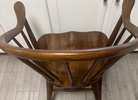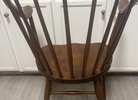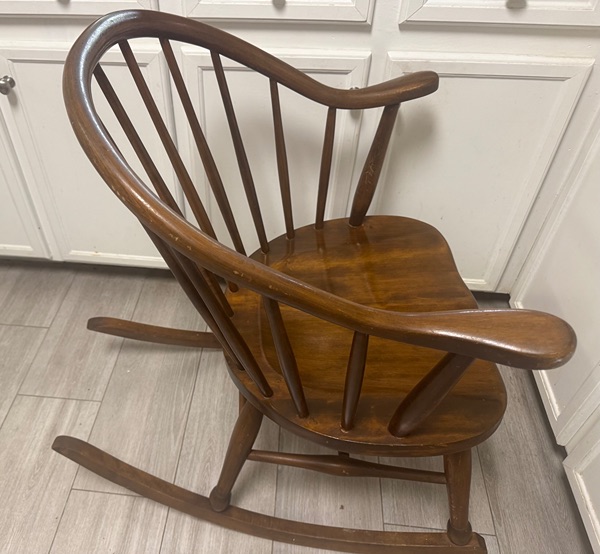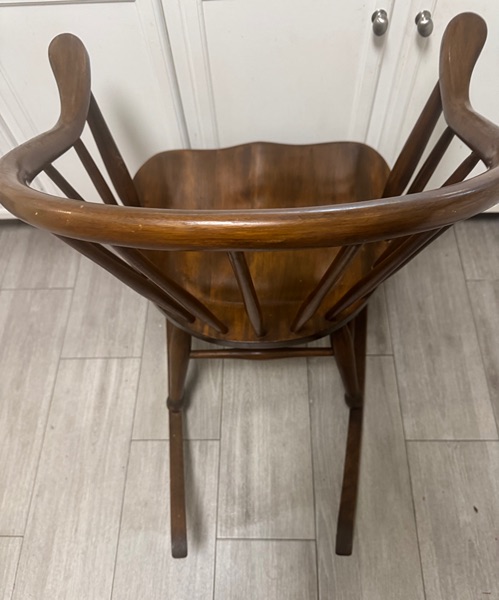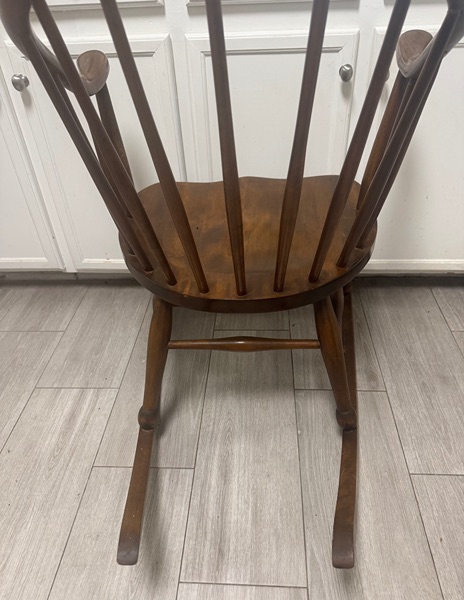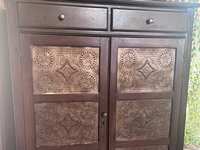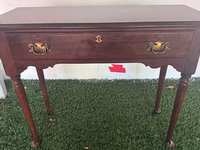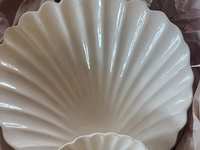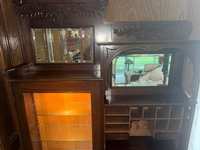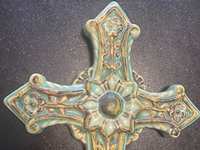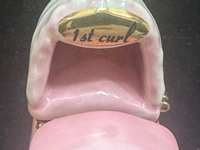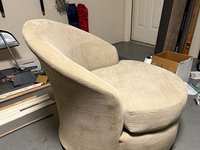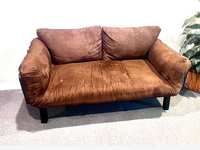Windsor-style rocking chair, wooden spindle back
Good Condition. Meet Grogans Mill. There is a scratch on the seat of the chair (picture), other wise normal wear and tear and rocks well. Unsure of brand. Has been in our family for many generations.
This is a Windsor-style rocking chair (also known as a Windsor rocker). Windsor chairs originated in England in the late 17th century and became popular in America during the 18th and 19th centuries. Key identifying features visible in your photos include:
• Spindle back: Multiple thin, turned wooden spindles (vertical slats) rising from the seat to support the crest rail.
• Continuous hoop arms: A single, bowed wooden armrail that wraps continuously from one side of the chair, over the back, to the other side, connected by additional spindles—classic for low-arm Windsor designs.
• Sack-back or bow-back style: The backrest has a rounded, sack-like shape at the top, with the spindles fanning out slightly.
• Turned legs and stretchers: The front legs are vase- or baluster-turned (swollen in the middle), joined by H-shaped stretchers for stability.
• Rockers: Curved wooden bases attached to the legs, allowing the gentle rocking motion.
• Wood and finish: Appears to be made from a hardwood like maple or birch for the turned elements, with a warm, honey-toned finish (likely a natural oil or varnish) showing patina from age and use. The seat looks saddled (slightly concave from wear), which is common in well-loved antiques.
This design is typically American-influenced, possibly from New England or the Mid-Atlantic region, where Windsor rockers were mass-produced in the 19th century. It’s not a “Boston rocker” (which has a taller, more ornate crest and often painted/stenciled decoration) or a continuous-arm Windsor without rockers—it’s distinctly a rocker variant.
The partial label on the underside (“MUTZ & POWERS” or similar) suggests it could be from a mid-20th-century manufacturer or retailer, as searches for this exact name didn’t yield a well-known antique furniture brand. It might be a custom or regional maker’s mark from the 1940s–1960s, when Windsor reproductions surged in popularity. Without clearer text or more context, it’s hard to pinpoint the exact origin, but it doesn’t detract from the style.
Condition Assessment
• Strengths: Overall solid structure with no major cracks in the rockers, arms, or spindles. The patina (age-related wear and color variation) adds character and authenticity.
• Issues: Moderate wear and tear. The label is deteriorated, but that’s cosmetic.
• It’s in good usable condition for daily sitting/rocking. No evidence of major repairs or glued breaks, which is good.

